Jun Yang, Kai Liang, Han Ke, Yuebin Zhang, Qian Meng, Lei Gao, Junping Fan, Guohui Li, Hu Zhou, Junyu Xiao,* and Xiaoguang Lei* JACS Au. 2024. In the era of global climate change, the increasingly severe Fusarium head blight (FHB) and deoxynivalenol (DON) contamination have caused economic losses and brought food and feed safety concerns. Recently, an FHB resistance gene Fhb7 coding a glutathione-S transferase (GST) to degrade DON by opening the critical toxic epoxide moiety was identified and opened a new window for wheat breeding and DON detoxification. However, the poor stability of Fhb7 and the elusiveness of the catalytic mechanism hinder its practical application. Herein, we report the first structure of Fhb7 at 2.41 Å and reveal a unique catalytic mechanism of epoxide opening transformation in GST family proteins. Furthermore, variants V29P and M10 showed that 5.5-fold and 266.7-fold longer half-life time than wild-type, respectively, were identified. These variants offer broad substrate scope, and the engineered biosafe Bacillus subtilis overexpressing the variants shows excellent DON degradation performance, exhibiting potential at bacterium engineering to achieve DON detoxification in the feed and biomedicine industry. This work provides a profound mechanistic insight into the enzymatic activities of Fhb7 and paves the way for further utilizing Fhb7-related enzymes in crop breeding and DON detoxification by synthetic biology.
Fan Xiao, Mengze Sun, Liyun Zhang, and Xiaoguang Lei* he Journal of Organic Chemistry. 2023. ortho-Phthalaldehyde (OPA) with high reactivity to the amine group has been widely used to modify proteins. We discovered new modifications of OPA and 2-acylbenzaldehyde and proposed the reaction mechanism. Using isotope labeling mass spectrometry-based experiment, we identified new cross-linking properties of OPA and 2-acylbenzaldehyde. This reactivity revealed that OPA has the potential to probe proximal amino acids in biological systems.
Yihui Gao, Mingzhe Ma, Wenyang Li,* and Xiaoguang Lei* Advanced Science, 2023, 2305608. As a vital project of forward chemical genetic research, target deconvolution aims to identify the molecular targets of an active hit compound. Chemoproteomics, either with chemical probe-facilitated target enrichment or probe-free, provides a straightforward and effective approach to profile the target landscape and unravel the mechanisms of action. Canonical methods rely on chemical probes to enable target engagement, enrichment, and identification, whereas click chemistry and photoaffinity labeling techniques improve the efficiency, sensitivity, and spatial accuracy of target recognition. In comparison, recently developed probe-free methods detect protein-ligand interactions without the need to modify the ligand molecule. This review provides a comprehensive overview of different approaches and recent advancements for target identification and highlights the significance of chemoproteomics in investigating biological processes and advancing drug discovery processes.
Qixuan Wang, Fusheng Guo, Jin Wang,Xiaoguang Lei Chemical Science, 2023, 14(37), 10353-10359. We herein report the first total syntheses of several bis-b-carboline alkaloids, picrasidines G, S, R, and T, and natural product-like derivatives in a divergent manner. Picrasidines G, S, and T feature an indolotetrahydroquinolizinium (ITHQ) skeleton, while picrasidine R possesses a 1,4-diketone linker between two b-carboline fragments. The synthesis of ITHQ-type bis-b-carboline alkaloids could be directly achieved by a late-stage regio-selective aza-[4 + 2] cycloaddition of vinyl b-carboline alkaloids, suggesting that this remarkable aza-[4 + 2] cycloaddition might be involved in the biosynthetic pathway. Computational studies revealed that such aza-[4 + 2] cycloaddition is a stepwise process and explained the unique regioselectivity (DDG = 3.77 kcal mol−1). Moreover, the successful application of iridiumcatalyzed C–H borylation on b-carboline substrates enabled the site-selective C-8 functionalization for efficient synthesis and structural diversification of this family of natural products. Finally, concise synthesis of picrasidine R by the thiazolium-catalyzed Stetter reaction was also accomplished.
Kai Wang, Zhiwei Zhang, Jing Hang, Jia Liu, Fusheng Guo, Yong Ding, Meng Li, Qixing Nie, Jun Lin, Yingying Zhuo, Lulu Sun, Xi Luo, Qihang Zhong, Chuan Ye, Chuyu Yun, Yi Zhang, Jue Wang, Rui Bao, Yanli Pang, Guang Wang, Frank J. Gonzalez, Xiaoguang Lei, Jie Qiao, and Changtao Jiang. Science. 2023, 381, eadd5787.
A mechanistic understanding of how microbial proteins affect the host could yield deeper insights into gut microbiota–host cross-talk. We developed an enzyme activity–screening platform to investigate how gut microbiota–derived enzymes might influence host physiology. We discovered that dipeptidyl peptidase 4 (DPP4) is expressed by specific bacterial taxa of the microbiota. Microbial DPP4 was able to decrease the active glucagon like peptide-1 (GLP-1) and disrupt glucose metabolism in mice with a leaky gut. Furthermore, the current drugs targeting human DPP4, including sitagliptin, had little effect on microbial DPP4. Using high-throughput screening, we identified daurisoline-d4 (Dau-d4) as a selective microbial DPP4 inhibitor that improves glucose tolerance in diabetic mice.
Conformational Dynamics of the Activated GLP‑1 Receptor‑Gs Complex Revealed by Cross-Linking Mass Spectrometry and Integrative Structure Modeling
Shijia Yuan, Lisha Xia, Chenxi Wang,Fan Wu, Bingjie Zhang, Chen Pan, Zhiran Fan, Xiaoguang Lei, Raymond C. Stevens, Andrej Sali, Liping Sun,* and Wenqing Shui* ACS Cent. Sci. 2023, 9, 992−1007
Despite advances in characterizing the structures and functions of G protein-coupled receptors (GPCRs), our understanding of GPCR activation and signaling is still limited by the lack of information on conformational dynamics. It is particularly challenging to study the dynamics of GPCR complexes with their signaling partners because of their transient nature and low stability. Here, by combining cross-linking mass spectrometry (CLMS) with integrative structure modeling, we map the conformational ensemble of an activated GPCR-G protein complex at near-atomic resolution. The integrative structures describe heterogeneous conformations for a high number of potential alternative active states of the GLP-1 receptor−Gs complex. These structures show marked differences from the previously determined cryo-EM structure, especially at the receptor−Gs interface and in the interior of the Gs heterotrimer. Alaninescanning mutagenesis coupled with pharmacological assays validates the functional significance of 24 interface residue contacts only observed in the integrative structures, yet absent in the cryo-EM structure. Through the integration of spatial connectivity data from CLMS with structure modeling, our study provides a new approach that is generalizable to characterizing the conformational dynamics of GPCR signaling complexes.
Diversity-oriented synthesis of cyclohexenes by combining enzymatic intermolecular DielsAlder reactions and decarboxylative functionalizations,
Jin Wang, Han Ke, Jun Yang, Nianxin Guo, Kangdelong Hu, Ruyao Tang,Qi Ding, Lei Gao*and Xiaoguang Lei*
Chem Catalysis, 2023, 3(1), 100451
Substituted cyclohexanes are common scaffolds found in both natural products and drug molecules. Diels-Alderases that can efficiently catalyze intermolecular Diels-Alder reactions to generate cyclohexene ring systems have received considerable interest. However, the synthetic power of Diels-Alderases is incomparable with chemo-catalysts due to their limited substrate scopes. Here, we report a new chemo-enzymatic strategy for the diversity-oriented syntheses of functionalized cyclohexenes. We first applied focused rational iterative site-specific mutagenesis to generate a natural Diels-Alderase variant M3, which shows a 34-fold increase in catalytic efficiency, broad substrate scope, and good to perfect stereoselectivity. Then, we used diverse transition-metal-catalyzed decarboxylative coupling reactions to functionalize the enzymatic Diels-Alder products. This work offers an efficient synthetic route to structurally diverse cyclohexenes that are not accessible by solely using biocatalysis or chemo-catalysis and illustrates how chemo-catalysis can cooperate with biocatalysis to expand the synthetic application of biocatalysts.
C-Glycosides are critical motifs embedded in many bioactive natural products. The inert C-glycosides are privileged structures for developing therapeutic agents owing to their high chemical and metabolic stability. Despite the comprehensive strategies and tactics established in the past few decades, highly efficient C-glycoside syntheses via C−C coupling with excellent regio-, chemo-, and stereoselectivity are still needed. Here, we report the efficient Pd-catalyzed glycosylation of C−H bonds promoted by weak coordination with native carboxylic acids without external directing groups to install various glycals to the structurally diverse aglycon parts. Mechanistic evidence points to the participation of a glycal radical donor in the C−H coupling reaction. The method has been applied to a wide range of substrates (over 60 examples), including many marketed drug molecules. Natural product- or drug-like scaffolds with compelling bioactivities have been constructed using a late-stage diversification strategy. Remarkably, a new potent sodium-glucose cotransporter-2 inhibitor with antidiabetic potential has been discovered, and the pharmacokinetic/ pharmacodynamic profiles of drug molecules have been changed using our C−H glycosylation approach. The method developed here provides a powerful tool for efficiently synthesizing C-glycosides to facilitate drug discovery.
Total Synthesis of Diverse Tetramic Acid Bearing cis-Decalin Natural Products Haoran Dong, Dachao Hu, Benke Hong, Jin Wang, and Xiaoguang Lei*
Angew. Chem. Int. Ed. 2023, e202301872
We here report the first total syntheses of four natural antibiotics vermisporin (1), PF1052/AB4015-A (2), AB4015-L (3), AB4015-B (4) and one hydrogenated natural product derivative AB4015-A2 (5) that all feature a tetramic acid bearing cis-decalin ring. The construction of the functionalized cis-decalin ring was achieved by a diastereoselective intramolecular Diels-Alder (IMDA) reaction which underwent a rare endo-boat transition state. Through an intramolecular neighboring-group-oriented strategy, the sterically hindered epoxy group in vermisporin (1), PF1052/AB4015-A (2) and AB4015-L (3) was installed efficiently. A one-pot aminolysis/Dieckmann-condensation cascade using L-amino acid derivatives afforded the desired tetramic acid structure. The total synthesis led to the unambiguous verification of the absolute configuration of these natural products
Xueping Wang, Victor Tomilin, Merve Ertem, Abigail McKernan, Xiaoguang Lei, Oleh Pochynyuk, Ossama B Kashlan* J. Physiol. 2022, 600, 4695-4711.
Bile acids, originally known to emulsify dietary lipids, are now established signalling molecules that regulate physiological processes. Signalling targets several proteins that include the ion channels involved in regulating intestinal motility and bile viscosity. Studies show that bile acids regulate the epithelial sodium channel (ENaC) in cultured cell models and heterologous expression systems. ENaC plays both local and systemic roles in regulating extracellular fluids. Here we investigated whether bile acids regulate ENaC expressed in native tissues. We found that taurocholic acid and taurohyodeoxycholic acid regulated ENaC in both the distal nephron and distal colon. We also tested the hypothesis that regulation occurs through direct binding. Using photoaffinity labelling, we found evidence for specific binding to both the β and γ subunits of the channel. In functional experiments, we found that the α subunit was sufficient for regulation. We also found that regulation by at least one bile acid was voltage-sensitive, suggesting that one binding site may be closely associated with the pore-forming helices of the channel. Our data provide evidence that bile acids regulate ENaC by binding to multiple sites to influence the open probability of the channel.
-
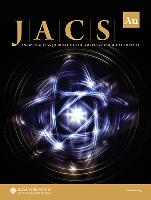
-
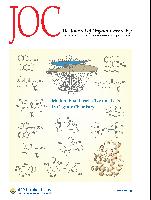
-
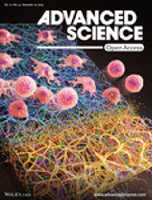
-
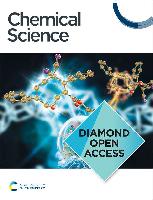
-
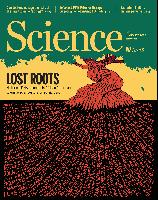
-
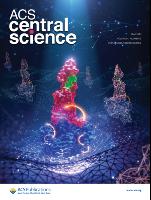
-

-

-
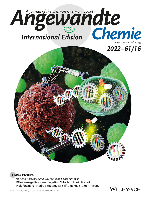
-
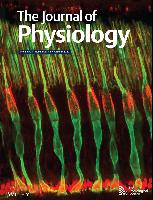
Enzymatic Degradation of Deoxynivalenol with the Engineered Detoxification Enzyme Fhb7
Jun Yang, Kai Liang, Han Ke, Yuebin Zhang, Qian Meng, Lei Gao, Junping Fan, Guohui Li, Hu Zhou, Junyu Xiao,* and Xiaoguang Lei*
JACS Au. 2024.
In the era of global climate change, the increasingly severe Fusarium head blight (FHB) and deoxynivalenol (DON) contamination have caused economic losses and brought food and feed safety concerns. Recently, an FHB resistance gene Fhb7 coding a glutathione-S transferase (GST) to degrade DON by opening the critical toxic epoxide moiety was identified and opened a new window for wheat breeding and DON detoxification. However, the poor stability of Fhb7 and the elusiveness of the catalytic mechanism hinder its practical application. Herein, we report the first structure of Fhb7 at 2.41 Å and reveal a unique catalytic mechanism of epoxide opening transformation in GST family proteins. Furthermore, variants V29P and M10 showed that 5.5-fold and 266.7-fold longer half-life time than wild-type, respectively, were identified. These variants offer broad substrate scope, and the engineered biosafe Bacillus subtilis overexpressing the variants shows excellent DON degradation performance, exhibiting potential at bacterium engineering to achieve DON detoxification in the feed and biomedicine industry. This work provides a profound mechanistic insight into the enzymatic activities of Fhb7 and paves the way for further utilizing Fhb7-related enzymes in crop breeding and DON detoxification by synthetic biology.
Investigation of Peptide Labeling with ortho-Phthalaldehyde and 2‑Acylbenzaldehyde
Fan Xiao, Mengze Sun, Liyun Zhang, and Xiaoguang Lei*
he Journal of Organic Chemistry. 2023.
ortho-Phthalaldehyde (OPA) with high reactivity to the amine group has been widely used to modify proteins. We discovered new modifications of OPA and 2-acylbenzaldehyde and proposed the reaction mechanism. Using isotope labeling mass spectrometry-based experiment, we identified new cross-linking properties of OPA and 2-acylbenzaldehyde. This reactivity revealed that OPA has the potential to probe proximal amino acids in biological systems.
Chemoproteomics, a broad avenue to target deconvolution
Yihui Gao, Mingzhe Ma, Wenyang Li,* and Xiaoguang Lei*
Advanced Science, 2023, 2305608.
As a vital project of forward chemical genetic research, target deconvolution aims to identify the molecular targets of an active hit compound. Chemoproteomics, either with chemical probe-facilitated target enrichment or probe-free, provides a straightforward and effective approach to profile the target landscape and unravel the mechanisms of action. Canonical methods rely on chemical probes to enable target engagement, enrichment, and identification, whereas click chemistry and photoaffinity labeling techniques improve the efficiency, sensitivity, and spatial accuracy of target recognition. In comparison, recently developed probe-free methods detect protein-ligand interactions without the need to modify the ligand molecule. This review provides a comprehensive overview of different approaches and recent advancements for target identification and highlights the significance of chemoproteomics in investigating biological processes and advancing drug discovery processes.
Divergent total syntheses of ITHQ-type bis-bcarboline alkaloids by regio-selective formal aza-[4 + 2] cycloaddition and late-stage C–H functionalization
Qixuan Wang, Fusheng Guo, Jin Wang,Xiaoguang Lei
Chemical Science, 2023, 14(37), 10353-10359.
We herein report the first total syntheses of several bis-b-carboline alkaloids, picrasidines G, S, R, and T, and
natural product-like derivatives in a divergent manner. Picrasidines G, S, and T feature an indolotetrahydroquinolizinium (ITHQ) skeleton, while picrasidine R possesses a 1,4-diketone linker
between two b-carboline fragments. The synthesis of ITHQ-type bis-b-carboline alkaloids could be
directly achieved by a late-stage regio-selective aza-[4 + 2] cycloaddition of vinyl b-carboline alkaloids,
suggesting that this remarkable aza-[4 + 2] cycloaddition might be involved in the biosynthetic pathway.
Computational studies revealed that such aza-[4 + 2] cycloaddition is a stepwise process and explained
the unique regioselectivity (DDG = 3.77 kcal mol−1). Moreover, the successful application of iridiumcatalyzed C–H borylation on b-carboline substrates enabled the site-selective C-8 functionalization for
efficient synthesis and structural diversification of this family of natural products. Finally, concise synthesis of picrasidine R by the thiazolium-catalyzed Stetter reaction was also accomplished.
Microbial-host-isozyme analyses reveal microbial DPP4 as a potential antidiabetic target
Kai Wang, Zhiwei Zhang, Jing Hang, Jia Liu, Fusheng Guo, Yong Ding, Meng Li, Qixing Nie, Jun Lin, Yingying Zhuo, Lulu Sun, Xi Luo, Qihang Zhong, Chuan Ye, Chuyu Yun, Yi Zhang, Jue Wang, Rui Bao, Yanli Pang, Guang Wang, Frank J. Gonzalez, Xiaoguang Lei, Jie Qiao, and Changtao Jiang. Science. 2023, 381, eadd5787.
A mechanistic understanding of how microbial proteins affect the host could yield deeper insights into gut microbiota–host cross-talk. We developed an enzyme activity–screening platform to investigate how gut microbiota–derived enzymes might influence host physiology. We discovered that dipeptidyl peptidase 4 (DPP4) is expressed by specific bacterial taxa of the microbiota. Microbial DPP4 was able to decrease the active glucagon like peptide-1 (GLP-1) and disrupt glucose metabolism in mice with a leaky gut. Furthermore, the current drugs targeting human DPP4, including sitagliptin, had little effect on microbial DPP4. Using high-throughput screening, we identified daurisoline-d4 (Dau-d4) as a selective microbial DPP4 inhibitor that improves glucose tolerance in diabetic mice.
Conformational Dynamics of the Activated GLP‑1 Receptor‑Gs Complex Revealed by Cross-Linking Mass Spectrometry and Integrative Structure Modeling
Conformational Dynamics of the Activated GLP‑1 Receptor‑Gs Complex Revealed by Cross-Linking Mass Spectrometry and Integrative Structure Modeling
Shijia Yuan, Lisha Xia, Chenxi Wang,Fan Wu, Bingjie Zhang, Chen Pan, Zhiran Fan, Xiaoguang Lei, Raymond C. Stevens, Andrej Sali, Liping Sun,* and Wenqing Shui* ACS Cent. Sci. 2023, 9, 992−1007
Despite advances in characterizing the structures and functions of G protein-coupled receptors (GPCRs), our understanding of GPCR activation and signaling is still limited by the lack of information on conformational dynamics. It is particularly challenging to study the dynamics of GPCR complexes with their signaling partners because of their transient nature and low stability. Here, by combining cross-linking mass spectrometry (CLMS) with integrative structure modeling, we map the conformational ensemble of an activated GPCR-G protein complex at near-atomic resolution. The integrative structures describe heterogeneous conformations for a high number of potential alternative active states of the GLP-1 receptor−Gs complex. These structures show marked differences from the previously determined cryo-EM structure, especially at the receptor−Gs interface and in the interior of the Gs heterotrimer. Alaninescanning mutagenesis coupled with pharmacological assays validates the functional significance of 24 interface residue contacts only observed in the integrative structures, yet absent in the cryo-EM structure. Through the integration of spatial connectivity data from CLMS with structure modeling, our study provides a new approach that is generalizable to characterizing the conformational dynamics of GPCR signaling complexes.
Diversity-oriented synthesis of cyclohexenes by combining enzymatic intermolecular DielsAlder reactions and decarboxylative functionalizations
Diversity-oriented synthesis of cyclohexenes by combining enzymatic intermolecular DielsAlder reactions and decarboxylative functionalizations,
Jin Wang, Han Ke, Jun Yang, Nianxin Guo, Kangdelong Hu, Ruyao Tang,Qi Ding, Lei Gao*and Xiaoguang Lei*
Chem Catalysis, 2023, 3(1), 100451
Substituted cyclohexanes are common scaffolds found in both natural products and drug molecules. Diels-Alderases that can efficiently catalyze intermolecular Diels-Alder reactions to generate cyclohexene ring systems have received considerable interest. However, the synthetic power of Diels-Alderases is incomparable with chemo-catalysts due to their limited substrate scopes. Here, we report a new chemo-enzymatic strategy for the diversity-oriented syntheses of functionalized cyclohexenes. We first applied focused rational iterative site-specific mutagenesis to generate a natural Diels-Alderase variant M3, which shows a 34-fold increase in catalytic efficiency, broad substrate scope, and good to perfect stereoselectivity. Then, we used diverse transition-metal-catalyzed decarboxylative coupling reactions to functionalize the enzymatic Diels-Alder products. This work offers an efficient synthetic route to structurally diverse cyclohexenes that are not accessible by solely using biocatalysis or chemo-catalysis and illustrates how chemo-catalysis can cooperate with biocatalysis to expand the synthetic application of biocatalysts.
C−H Glycosylation of Native Carboxylic Acids: Discovery of Antidiabetic SGLT‑2 Inhibitors
C−H Glycosylation of Native Carboxylic Acids: Discovery of Antidiabetic SGLT‑2 Inhibitors,
Sanshan Wang, Kaiqi Chen, Fusheng Guo, Wenneng Zhu, Chendi Liu, Haoran Dong, Jin-Quan Yu,*and Xiaoguang Lei*
https://doi.org/10.1021/acscentsci.3c00201
Publication Date:June 9, 2023
C-Glycosides are critical motifs embedded in many bioactive natural products. The inert C-glycosides are privileged structures for developing therapeutic agents owing to their high chemical and metabolic stability. Despite the comprehensive strategies and tactics established in the past few decades, highly efficient C-glycoside syntheses via C−C coupling with excellent regio-, chemo-, and stereoselectivity are still needed. Here, we report the efficient Pd-catalyzed glycosylation of C−H bonds promoted by weak coordination with native carboxylic acids without external directing groups to install various glycals to the structurally diverse aglycon parts. Mechanistic evidence points to the participation of a glycal radical donor in the C−H coupling reaction. The method has been applied to a wide range of substrates (over 60 examples), including many marketed drug molecules. Natural product- or drug-like scaffolds with compelling bioactivities have been constructed using a late-stage diversification strategy. Remarkably, a new potent sodium-glucose cotransporter-2 inhibitor with antidiabetic potential has been discovered, and the pharmacokinetic/ pharmacodynamic profiles of drug molecules have been changed using our C−H glycosylation approach. The method developed here provides a powerful tool for efficiently synthesizing C-glycosides to facilitate drug discovery.
Total Synthesis of Diverse Tetramic Acid Bearing cis-Decalin Natural Products
Total Synthesis of Diverse Tetramic Acid Bearing cis-Decalin Natural Products
Haoran Dong, Dachao Hu, Benke Hong, Jin Wang, and Xiaoguang Lei*
Angew. Chem. Int. Ed. 2023, e202301872
We here report the first total syntheses of four natural antibiotics vermisporin (1), PF1052/AB4015-A (2), AB4015-L (3), AB4015-B (4) and one hydrogenated natural product derivative AB4015-A2 (5) that all feature a tetramic acid bearing cis-decalin ring. The construction of the functionalized cis-decalin ring was achieved by a diastereoselective intramolecular Diels-Alder (IMDA) reaction which underwent a rare endo-boat transition state. Through an intramolecular neighboring-group-oriented strategy, the sterically hindered epoxy group in vermisporin (1), PF1052/AB4015-A (2) and AB4015-L (3) was installed efficiently. A one-pot aminolysis/Dieckmann-condensation cascade using L-amino acid derivatives afforded the desired tetramic acid structure. The total synthesis led to the unambiguous verification of the absolute configuration of these natural products
Bile acids regulate the epithelial Na+ channel in native tissues through direct binding at multiple sites
Xueping Wang, Victor Tomilin, Merve Ertem, Abigail McKernan, Xiaoguang Lei, Oleh Pochynyuk, Ossama B Kashlan*
J. Physiol. 2022, 600, 4695-4711.
Bile acids, originally known to emulsify dietary lipids, are now established signalling molecules that regulate physiological processes. Signalling targets several proteins that include the ion channels involved in regulating intestinal motility and bile viscosity. Studies show that bile acids regulate the epithelial sodium channel (ENaC) in cultured cell models and heterologous expression systems. ENaC plays both local and systemic roles in regulating extracellular fluids. Here we investigated whether bile acids regulate ENaC expressed in native tissues. We found that taurocholic acid and taurohyodeoxycholic acid regulated ENaC in both the distal nephron and distal colon. We also tested the hypothesis that regulation occurs through direct binding. Using photoaffinity labelling, we found evidence for specific binding to both the β and γ subunits of the channel. In functional experiments, we found that the α subunit was sufficient for regulation. We also found that regulation by at least one bile acid was voltage-sensitive, suggesting that one binding site may be closely associated with the pore-forming helices of the channel. Our data provide evidence that bile acids regulate ENaC by binding to multiple sites to influence the open probability of the channel.